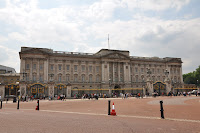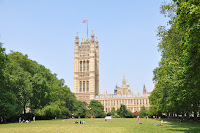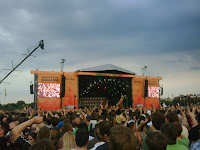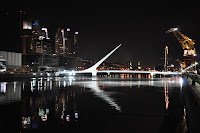 On Sunday our first stop was the British Museum. I was excited about the visit, as I wanted to see the Elgin Marbles – a collection of classical Greek marble sculptures and other artifacts that were part of the Parthenon and other buildings on the Acropolis. Following my visit to Athens earlier this year, the timing of the visit worked out very well.
On Sunday our first stop was the British Museum. I was excited about the visit, as I wanted to see the Elgin Marbles – a collection of classical Greek marble sculptures and other artifacts that were part of the Parthenon and other buildings on the Acropolis. Following my visit to Athens earlier this year, the timing of the visit worked out very well.  In terms of the artifacts themselves, they weren’t significantly different from those that I had seen Athens (basically different pieces of the Parthenon as well as one of the six Caryatids). Instead, the truly interesting part of the visit was being able to compare the different perspectives of the Parthenon Museum and the British Museum with respect to the ongoing controversy over whom the artifacts rightly “belong” to (there was even a pamphlet outlining the opposing views).
In terms of the artifacts themselves, they weren’t significantly different from those that I had seen Athens (basically different pieces of the Parthenon as well as one of the six Caryatids). Instead, the truly interesting part of the visit was being able to compare the different perspectives of the Parthenon Museum and the British Museum with respect to the ongoing controversy over whom the artifacts rightly “belong” to (there was even a pamphlet outlining the opposing views).

 Here’s a related link for anyone who is interested:
Here’s a related link for anyone who is interested:http://en.wikipedia.org/wiki/Elgin_Marbles
Aside from the Elgin Marbles, I found the Rosetta Stone to be the most interesting exhibit in the museum. I had forgotten (or perhaps never really knew) that it was in the British Museum’s collection and was pleasantly surprised to see it.
We then walked to the London Gallery in order to see a couple of paintings that Emilie was interested in (some works by Rafael in particular).
 The most memorable part of the visit turned out to be during our departure, however, when we asked a girl to take a picture of us outside and she turned out to be perhaps the worst picture taker ever. As can be seen from the photo below, she seems to have very poor aim (we noticed this while she was lining up the photo, but didn’t know what to say…).
The most memorable part of the visit turned out to be during our departure, however, when we asked a girl to take a picture of us outside and she turned out to be perhaps the worst picture taker ever. As can be seen from the photo below, she seems to have very poor aim (we noticed this while she was lining up the photo, but didn’t know what to say…). The best part was the fact that we didn’t just pick out some random person to take the picture. She had a very expensive camera and was taking artistic shots of Trafalgar Square. Who knows…perhaps she was trying to be artistic with this shot as well?
The best part was the fact that we didn’t just pick out some random person to take the picture. She had a very expensive camera and was taking artistic shots of Trafalgar Square. Who knows…perhaps she was trying to be artistic with this shot as well?***
After walking around a bit more it was time to head back to the hotel for our stuff and then on to Heathrow for our flight home. As we were heading to the Tube, the English soccer fans were out in full force preparing for their afternoon World Cup match with Germany. They were definitely fired up, with many dressed in full hooligan attire – face paint and all.
***
After arriving at the airport we learned that our flight was delayed for nearly two hours. By this point all we wanted to do was get home and now we had to hang around Heathrow for three hours. But there was one bright spot – the Germans were beating the English 4-0, which I considered payback for the English fans rooting for Ghana (or, more likely, against the U.S.) in the pub the other night.









































































